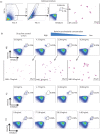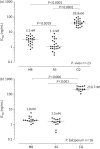Methylene blue inhibits the asexual development of vivax malaria parasites from a region of increasing chloroquine resistance
- PMID: 25150147
- PMCID: PMC4267499
- DOI: 10.1093/jac/dku326
Methylene blue inhibits the asexual development of vivax malaria parasites from a region of increasing chloroquine resistance
Abstract
Objectives: Methylene blue, once discarded due to its unsettling yet mild side effects, has now found a renewed place in the pharmacopoeia of modern medicine. The continued spread of drug-resistant Plasmodium vivax and Plasmodium falciparum has also led to a recent re-examination of methylene blue's potent antimalarial properties. Here we examine the ex vivo susceptibility profile of Plasmodium spp. isolates to methylene blue; the isolates were from a region on the Thai-Myanmar border where there are increasing rates of failure when treating vivax malaria with chloroquine.
Methods: To do this we used a newly developed ex vivo susceptibility assay utilizing flow cytometry and a portable flow cytometer with a near-UV laser.
Results: P. vivax (median methylene blue IC50 3.1 nM, IQR 1.7-4.3 nM) and P. falciparum (median methylene blue IC50 1.8 nM, IQR 1.6-2.3 nM) are susceptible to methylene blue treatment at physiologically relevant levels. Unfortunately, the addition of chloroquine to combination treatments with methylene blue significantly reduces the ex vivo effectiveness of this molecule.
Conclusions: Our data support further efforts to employ methylene blue as a safe, low-cost antimalarial to treat drug-resistant malaria.
Keywords: Plasmodium falciparum; Plasmodium vivax; drug sensitivity assays; drug susceptibility assays.
© The Author 2014. Published by Oxford University Press on behalf of the British Society for Antimicrobial Chemotherapy. All rights reserved. For Permissions, please e-mail: journals.permissions@oup.com.
Figures



References
-
- Guttmann P, Ehrlich P. Ueber die Wirkung des Methylenblau bei Malaria. Berlin Klin Wochenschr. 1891;28:953–6.
-
- Wainwright M, Crossley KB. Methylene blue–a therapeutic dye for all seasons? J Chemother. 2002;14:431–43. - PubMed
-
- Boylston M, Beer D. Methemoglobinemia: a case study. Crit Care Nurse. 2002;22:50–5. - PubMed
Publication types
MeSH terms
Substances
Grants and funding
LinkOut - more resources
Full Text Sources
Other Literature Sources
Miscellaneous

